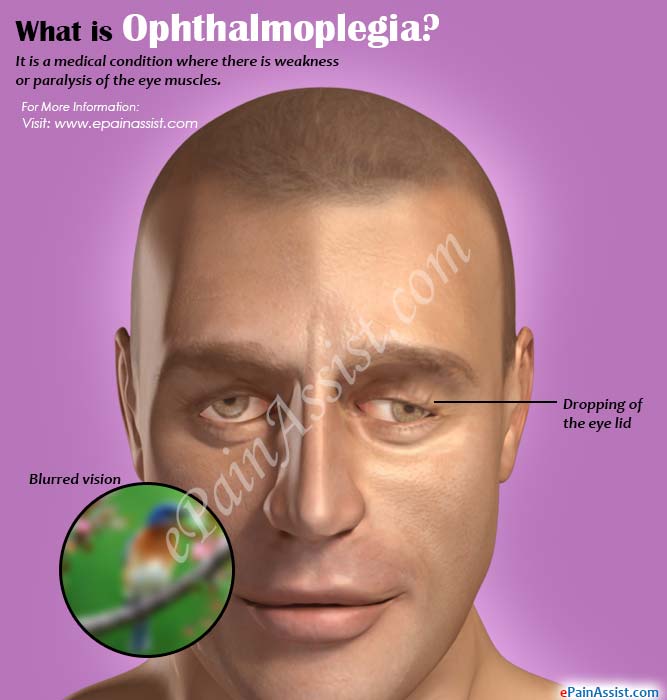This article on Epainassist.com has been reviewed by a aesculapian professional , as well as delay for facts , to see to it the reader the best possible accuracy .
We follow a exacting editorial policy and we have a zero - tolerance policy regarding any level of plagiarism . Our clause are resourced from reputable online Page . This article may contains scientific references . The numbers in the digression ( 1 , 2 , 3 ) are clickable connection to peer - reviewed scientific papers .
The feedback link “ Was this Article Helpful ” on this page can be used to report content that is not accurate , up - to - date or questionable in any fashion .

This article does not ply aesculapian advice .
What is Ophthalmoplegia?
Ophthalmoplegia is a aesculapian condition where there is weakness or palsy of the eye muscle ( extraocular muscles ) . There are six muscle which hold in the eye campaign and hold the centre in its place and any one of these muscles can be affected in Ophthalmoplegia . Ophthalmoplegia is also known as Ophthalmoparesis . Patients suffering from ophthalmoplegia can have slur ordouble vision . Some of the common cause of Ophthalmoplegia are slash , thyroid diseaseand mind accidental injury / hurt . Patients suffering fromdiabetesare slightly at an increased risk for induce Ophthalmoplegia .
Classification of Ophthalmoplegia
Ophthalmoplegia is of two case : Internal ophthalmoplegia and inveterate reform-minded external ophthalmoplegia .
Chronic Progressive External Ophthalmoplegia : This eccentric of ophthalmoplegia often develops in people between the geezerhood of 18 to 40 years . This condition usually start with droop of the eyelids and difficultness in control the muscle which coordinate the middle .
Internal Ophthalmoplegia : intimate ophthalmoplegia occurs as a result of damage to the boldness responsible for for coordinating the lateral optic movement lead to double visual sensation .
Ophthalmoplegia can involve any or all of the extraocular sinew lie of the inferior recti , higher-ranking rectus , sidelong rectus , medial recti , superior oblique and inferior oblique muscle and it can be classified based on the muscular tissue bear upon .
Ophthalmoplegia can also be sort on the basis of the direction of the impress movement such as upright Ophthalmoplegia etc .
Causes & Risk Factors of Ophthalmoplegia
Symptoms of Ophthalmoplegia
Blurred or double vision is the coarse symptoms stick out by patients touch on by ophthalmoplegia . Patients with ophthalmoplegia also incur it difficult to position their eye in sync . Some patients have trouble in moving both the eyes in different directions . Many of the patients will have droop of their palpebra . If the ophthalmoplegia is related to a systemic disorder then symptoms consist of muscle weakness and difficulty in swallow .
Diagnosis of Ophthalmoplegia
Physical examination is done to check the eye move of the affected role . CT scanorMRI scancan also be done for a closer examination of the optic . ancestry trial are done to verify if the cause of Ophthalmoplegia is some other disorder , such as thyroid disease .
Treatment of Ophthalmoplegia
Prevention of Ophthalmoplegia
Ophthalmoplegia is generally a symptom of some other disease or syndrome . veritable eye checkups supporter in early diagnosis of this condition . Our center have very finespun muscles , which take a sound vascular and nervous system to function properly .
Also maintaining a level-headed vascular system and a balanced life-style helps in decreasing the risk of exposure of apoplexy and problems with imagination including Ophthalmoplegia .
Prognosis & Life Expectancy of Ophthalmoplegia
patient with isolated ophthalmoplegia will have a normal life history expectancy with a good overall prospect . The prospect of ophthalmoplegia also depends on the underlying suit of this condition . Patients having mitochondrial disease , genetic diseases , stroke , vascular disease will have a different outcome depending on each shape . For a good prospect , Ophthalmoplegia should be diagnosed and treated early .
credit :